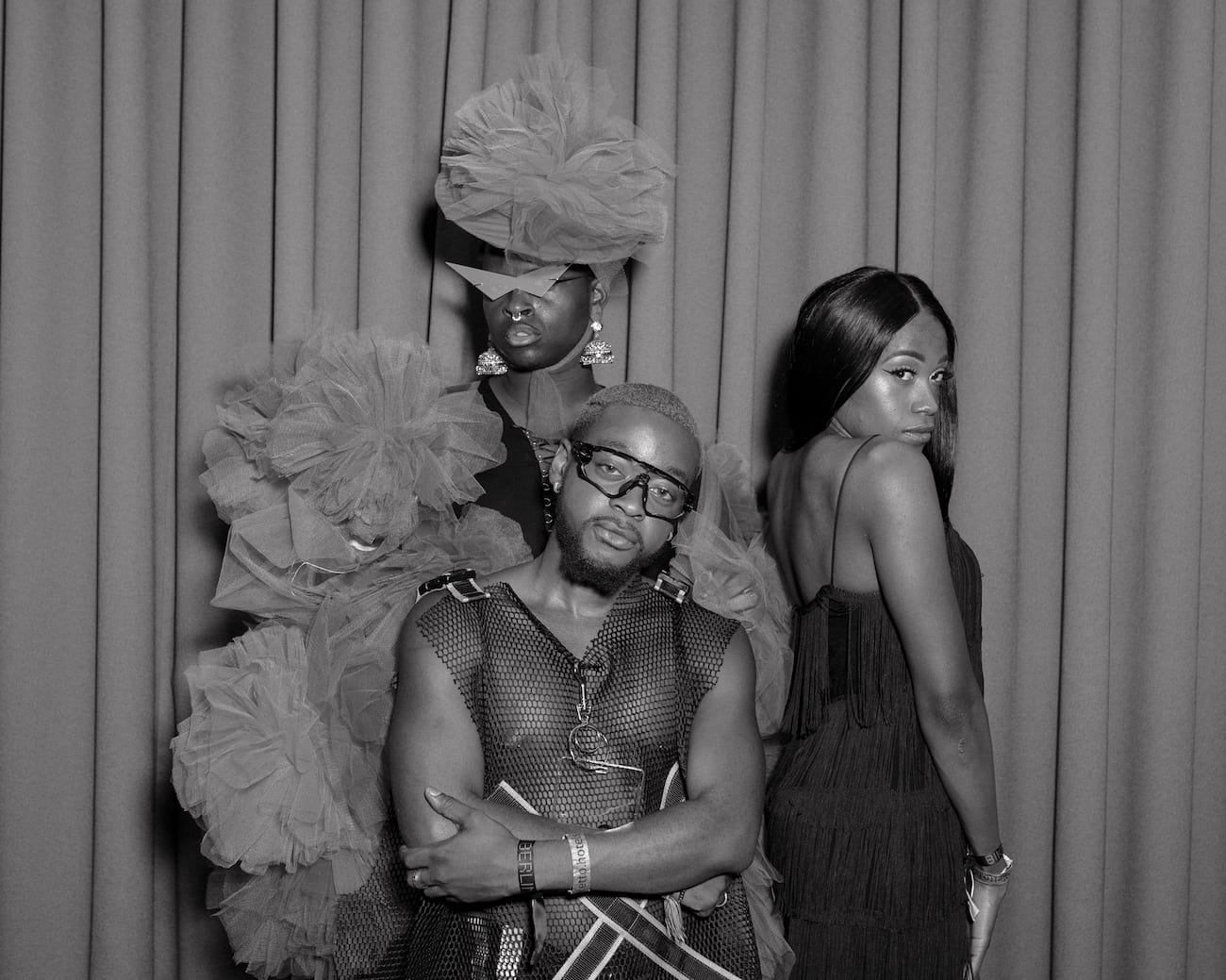Lina Iris Viktor presents a gilded new exhibition in London, delving deep into the complex history of one of the world’s most desired metals


Lina Iris Viktor presents a gilded new exhibition in London, delving deep into the complex history of one of the world’s most desired metals

Futures, a platform dedicated to emerging photographers, returns to Unseen this year with another crop…

Merging Moroccan heritage with Western cues, Mous Lamrabat, nominated by Vogue Italia’s Chiara Bardelli Nonino, creates images rich in wit and colour

Kyle Weeks, nominated by Vogue Italia’s Chiara Bardelli Nonino, crosses genres to portray masculinity and the African body

Dustin Thierry – nominated by Erik Vroons of GUP Magazine – gives voice to those who share his Afro-Carribean heritage in his adopted Dutch homeland

Molly Matalon, nominated by Daniel Shea, offers a new kind of romance with her compelling images

Maurice Scheltens and Liesbeth Abbenes have long been preoccupied by perspective. In fact, this year is the 18th that the artist duo – partners in life, as well as in work – have spent creating their painstakingly controlled scenes to capture on camera together. Translating their immaculately constructed three-dimensional sets into technically precise two-dimensional images, they have made a name for themselves with rich, playful and illusory works that toy with spatial dimensions, and which, though aesthetically pleasing, are conceptually rigorous first and foremost. The concept, Abbenes assures us, always precedes the picture.
Their spring exhibition at Amsterdam’s Foam Museum (from 15 March to 05 June) is something like a retrospective, giving the Dutch duo an opportunity to look back over almost two decades of work from a new perspective. And true to form, they are first rearranging the rooms their work will inhabit by uncovering windows that have not been opened in many years. “We will have light and some fresh air, hopefully. We have to give up walls for that, but it’s good to have a bit of the outside world coming in,” they say. Shifting the dimensions and conditions of the space itself will alter the way viewers see the work, and that typifies their approach to the exhibition, rethinking how the works will appear in this new context, and how they relate to each other.

Discovered objects and images play a vital role in the work of Vancouver-born, Brooklyn-based artist Sara Cwynar. Her practice blends collage, still life and portraits in photographic and filmic forms, incorporating material sourced on eBay, or at flea markets and the like. So when the opportunity arose to hold an exhibition at the Minneapolis Institute of Art last autumn, followed by a show at Milwaukee Art Museum this spring, it seemed a serendipitous moment to unearth works incorporating items from an archive close by.
“Some of the pictures that I’ve used as source material over the years came from an eBay seller who bought the archive of an old photo studio in Milwaukee,” she explains. “I think it was operational from the 1950s to the 1970s or so, and it closed down a long time ago. I like that they tie in to the location; I have repurposed some of the negatives from that for this show.”

Succeeding the museum’s founding director, Jean-Luc Monterosso, Simon Baker plans to open up both its collection and its programme to audiences, carving out a space for emerging artists, fashion photography, ideas on geography, and newer names to the city’s rich artistic ecosystem. “We have to think about what isn’t being done in the photographic landscape in France,” he explains. “We really want to support younger artists – particularly with solo shows. While there are amazing fairs and group shows, that’s something that’s been missing.”
What better way to start, then, than with a solo exhibition by Coco Capitán? Since she graduated from the Royal College of Art in London in 2016, the 26-year-old Spanish artist has become a never-predictable presence. Her work is always dynamic and often playful, but underpinned by a precision and a poignancy too – whether created for, and thanks to fashion, such as her ongoing artistic collaboration with Gucci creative director Alessandro Michele, or her diverse self-initiated series comprising text and paint along with traditional photography.

“From the 1890s through to just after the Second World War, modern artist couples forged new ways of making art and of living and loving,” Jane Alison, head of visual arts at London’s Barbican, says. She’s putting the final touches to Modern Couples: Art, Intimacy and the Avant-garde – a mammoth endeavour that examines how the work of individual artists and writers was shaped by the relationships they embarked on with each other.
The show spans painting, sculpture, literature, dance, music, architecture and photography, and includes ephemera such as personal photographs and love letters alongside artworks. It’s also far from a cursory look at the history of art’s favourite romantic pairings. The likes of Virginia Woolf and Vita Sackville-West, or Frida Kahlo and Diego Rivera, have their part to play here, but so do lesser-known affiliations, from Claude Cahun and Marcel Moore to George Platt Lynes, Monroe Wheeler and Glenway Wescott, whose enduring ménage à trois turned their travels around Europe into an intensely fruitful creative experience.